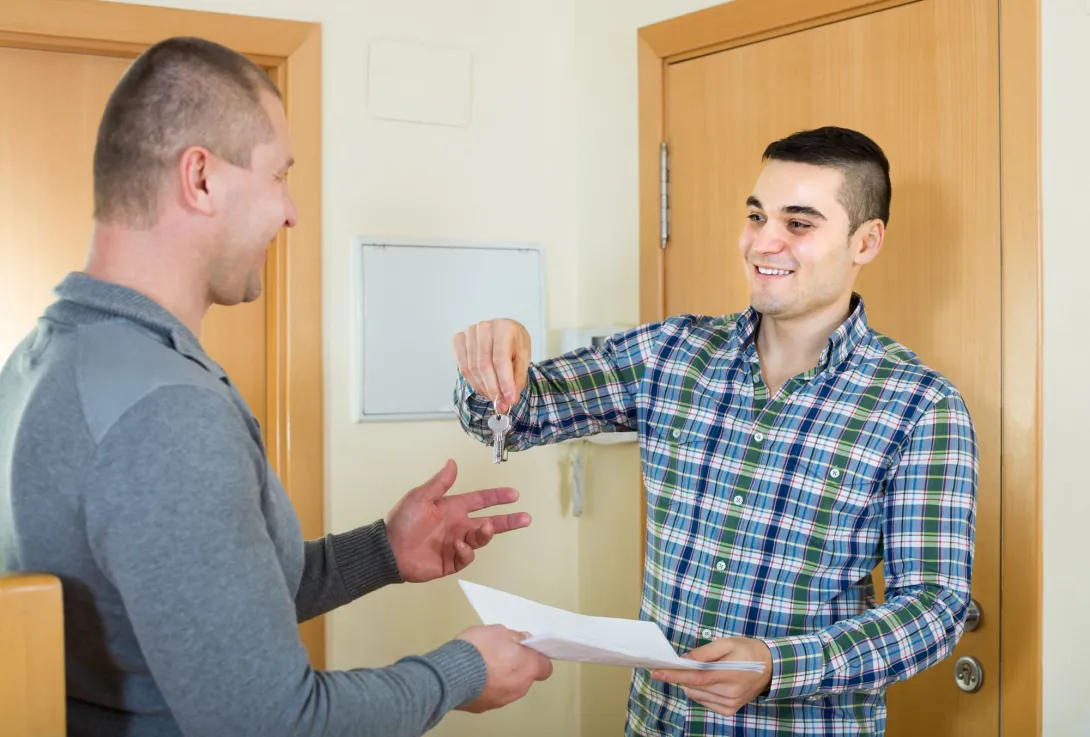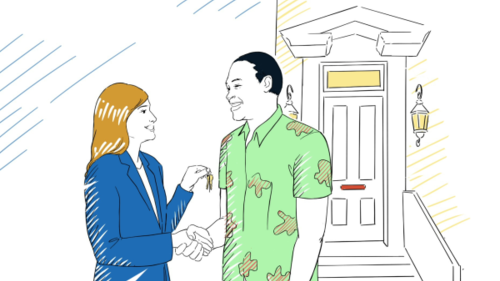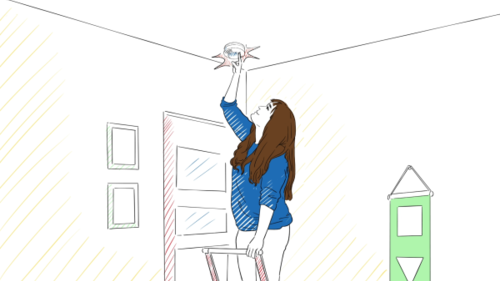A Newcomer’s Guide for Renting in the U.S.

Understanding How Renting Works in the U.S.
Finding a home in the U.S. can be difficult because there are so few affordable homes, especially for people with lower incomes. Despite the housing shortage, many people in the U.S. continue to rent their homes. Rent prices will vary based on where you live. Some cities are more expensive than others. When you look for a rental, you will find different types of homes:
- You might rent a room in a house where you share the kitchen and bathroom with others.
- You could find an apartment in a small or large building.
- You might also rent a whole house just for you and your family (a single-family home).
When you decide to rent a home, you will usually sign an important document called a lease with the person or company that owns or manages the property. A lease is a type of rental agreement where you agree to pay the owner a specific amount of money each month. In return, the owner agrees to let you live in the home for a set period, which is often one year. You can think of the lease as an important written set of rules for your rental home.
Planning Your Search
Before you start looking for available homes, it’s important to plan carefully.
- Know Your Numbers: Think about how much money your family can comfortably spend on rent each month. A general guideline is that rent should be about 30–35% of your household income after taxes.
- List Your Needs: What does your family absolutely need in a home? Think about the number of bedrooms. Also, consider your daily life. Is the home in a good and safe location for work or school? Is there public transportation (like a bus or train) close by if you need it? Does anyone in your family need special arrangements in the home (for example, no stairs, or a bathroom that is easy for someone in a wheelchair to use)?
Financial Realities of Renting in the U.S.
Renting a home in the U.S. involves more than just the monthly rent payment. Understanding all these expenses from the start helps you budget effectively and avoid surprises.
A security deposit is one of the most important initial costs. Most rentals require this payment, which typically equals one month’s rent, though the amount can vary by location or management company. Landlords hold this money to cover property damage beyond normal wear or any unpaid rent when a tenant leaves. If you return the unit in its original condition, you usually get your deposit back. Be ready to pay both the security deposit and the first month’s rent before you move in. For example, a $1,500 first month’s rent plus a $1,500 security deposit totals a $3,000 payment due upfront.
You must also consider utilities. Ask landlords which utilities are included in the rent and which ones you pay separately. While water, trash removal, or heat sometimes come with the rent, electricity, gas (for heating and cooking), and Internet often do not. You will need to arrange separate payments with utility companies. This may involve setting up new utility accounts and paying a deposit.
Other potential costs exist. Some landlords charge a non-refundable application fee (typically $30–$70 per adult applicant) for background and credit checks. If you have pets, landlords may require an additional non-refundable pet fee or a refundable pet deposit, plus ongoing “pet rent” each month. Other expenses might include parking fees in some buildings or areas, and the cost of renters’ insurance to protect your belongings from theft or damage.
Tenants also have responsibilities that affect overall costs, such as minor maintenance like changing light bulbs and keeping the unit clean. In some rentals, especially single-family homes or duplexes, tenants might also handle yard work or snow removal. Following all lease rules is crucial because breaking the rules (for example, by having unauthorized pets or damaging the property) can lead to additional fees or even eviction.
Finding a Home When Many People Are Looking
It’s difficult to find an affordable home to rent because many people are looking for housing at the same time. The journey to finding a rental home requires patience and persistence. Stay informed, ask questions, and use the support available to you. Groups that support newcomers and other local community organizations can offer help. They know about housing in your area and can guide you to useful resources.
As you search, you may hear new words for different types of housing and rent:
- Rent Control or Rent Stabilization: Some cities across the United States have special local laws that limit how much a landlord can increase the rent each year or how often they can raise it.
- Market rate rentals: These are homes where the owner can set any price. These can be expensive, and the cost can change depending on their location.
- Mixed-income housing: These are buildings where some homes are rented at the market rate, and others have lower rents for people with lower incomes.
- Public housing: The government helps build and pay for these homes, so the rent is usually lower and based on your income.
- Section 8 or Housing Choice Vouchers: These are government programs that help pay a portion of your rent directly to the landlord.
Some of these options, like public housing or Section 8, can make rent cheaper. However, you usually need to apply for them, and there can be long waiting lists. The people and groups supporting you can help you learn which housing options might be possible and realistic for you and your family. To learn more about the Housing Choice Voucher Program or Section 8, visit the U.S. Department of Housing and Urban Development website.
The Pre-Move-In Inspection
Before signing a lease and before moving in, it’s important to remember to inspect your unit. Why? If you find any problems, you can ask the landlord to fix them before you move in. Also, doing an inspection helps protect you. You can make a record (like by taking photos) that shows some problems were already there before you moved in. This record can help make sure the landlord doesn’t blame you for these problems later.
What to Look for When You Inspect a Home
It’s a good idea to use a checklist when you inspect a home. Here are important things to check. For a more detailed checklist, you can review this Switchboard Sample Housing Walk-Through Checklist.
- General Condition: Look around the home. Is it clean? Does it seem well taken care of? Check for any signs of pests (like mice or insects). Is the paint in good condition or is it peeling?
- Safety First: Check that all smoke alarms and carbon monoxide alarms are working (Carbon monoxide is a dangerous gas you cannot see or smell). Look carefully for any uncovered electrical wires or any wires that are close to a water source. Make sure all windows and doors open, close, and lock properly to keep the home safe.
- Water and Plumbing: Turn on the water in all sinks and showers. Does it flow well and get hot? Make sure toilets flush correctly. Look under the sinks for any water leaks or signs of past water damage, like stains or soft wood.
- Heating, Cooling, and Appliances: If the home has a heater or air conditioning (AC), check that they both work. In the kitchen, make sure the oven, all stove burners, and the refrigerator are working well.
- Lights and Electricity: Turn every light switch on and off. Test the electrical outlets to make sure they have power. An easy way to test outlets is to plug in a phone charger.


